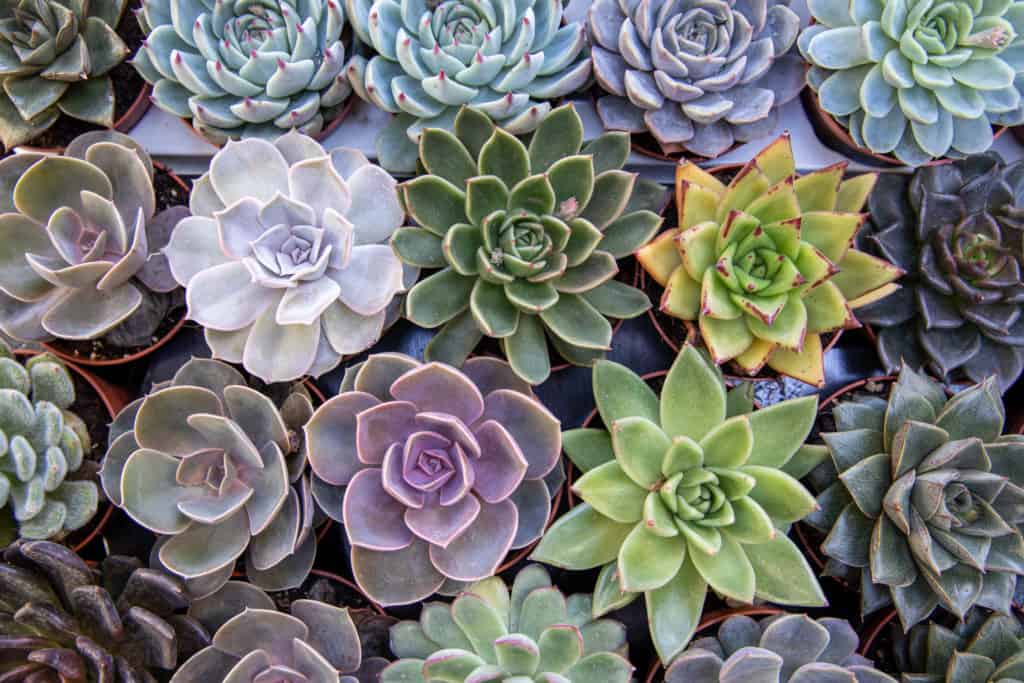
Echeverias are lovely, plump flower-shaped succulents that come in many forms and colors. They don’t require that much babying, perfect for beginner plant owners. That doesn’t mean one should be slack in giving them the best care.
Here are the top tips on taking care of your Echeveria indoors to ensure they flourish for years to come:
(As an Amazon Associate, I earn from qualifying purchases.)
Table of contents
- 1. Daily Exposure to 6 Hours of Full Sun with Partial Shade in the Afternoon
- 2. Water Once Every 1-2 Weeks
- 3. Plant in a Mixture of 5:3:2 of Potting Soil, Coarse Sand, and Perlite/Vermiculite Respectively
- 4. Give Slow-releasing Fertilizers Twice a Year at the Beginning of Spring and Summer
- 5. Place in a Warm Area Away from Radiators, Air Vents, and Open Windows
- 6. Repot Echeverias Once Every 2-3 years
- 7. Pull Away Healthy Leaves or Offsets to Propagate More Echeverias
- 8. Do a Biweekly Pest and Disease Check to Maintain Echeveria’s Health
- 9. Do Not Prune Echeverias Unless it has Extensive Damages on the Leaves and Stem
1. Daily Exposure to 6 Hours of Full Sun with Partial Shade in the Afternoon
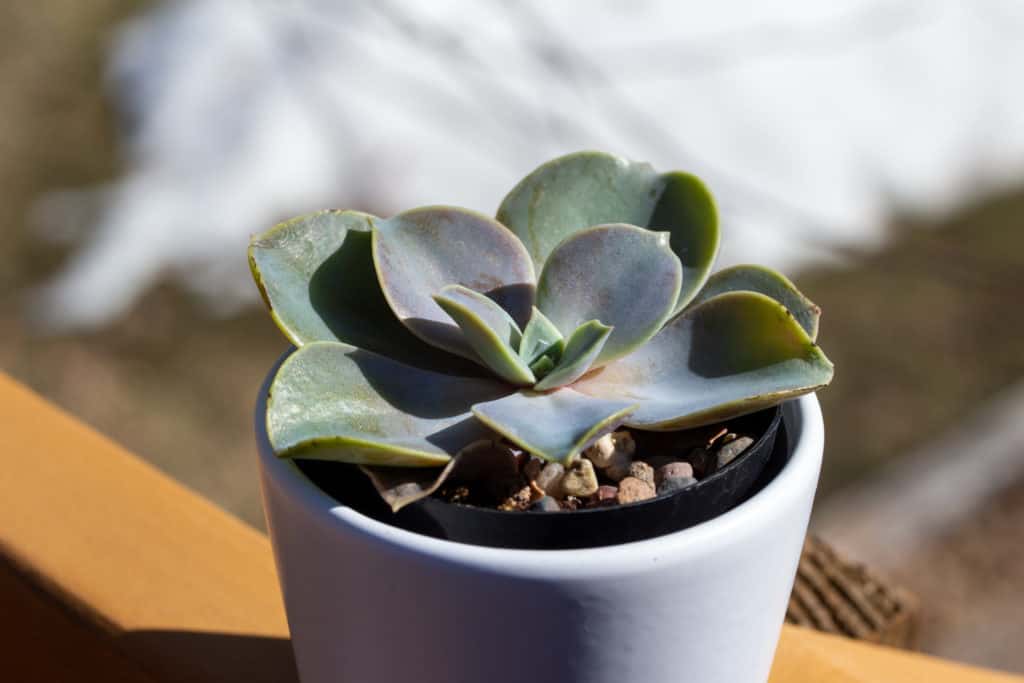
Echeverias are native to the southern US and Mexico, so, make sure your succulent is receiving plenty of sunlight to keep up with their needs. A window sill where your succulent can receive 4-6 hours of the direct sun would be the best place for it. Sometimes a plant left on your sill may look a little scorched and this is often because of the afternoon sun. The increased heat and direct sun rays will be magnified as it passes through the window, which could cause scorching on the foliage.
In this case, it’s beneficial to provide the plant with partial shade. It could be as simple as drawing the curtain close to allow indirect sunlight to pass through. Make sure to rotate your Echeveria every now and then, so all sides get even sunlight. Otherwise, the foliage will start to grow leggy in search of more light, losing its compact shape.
2. Water Once Every 1-2 Weeks
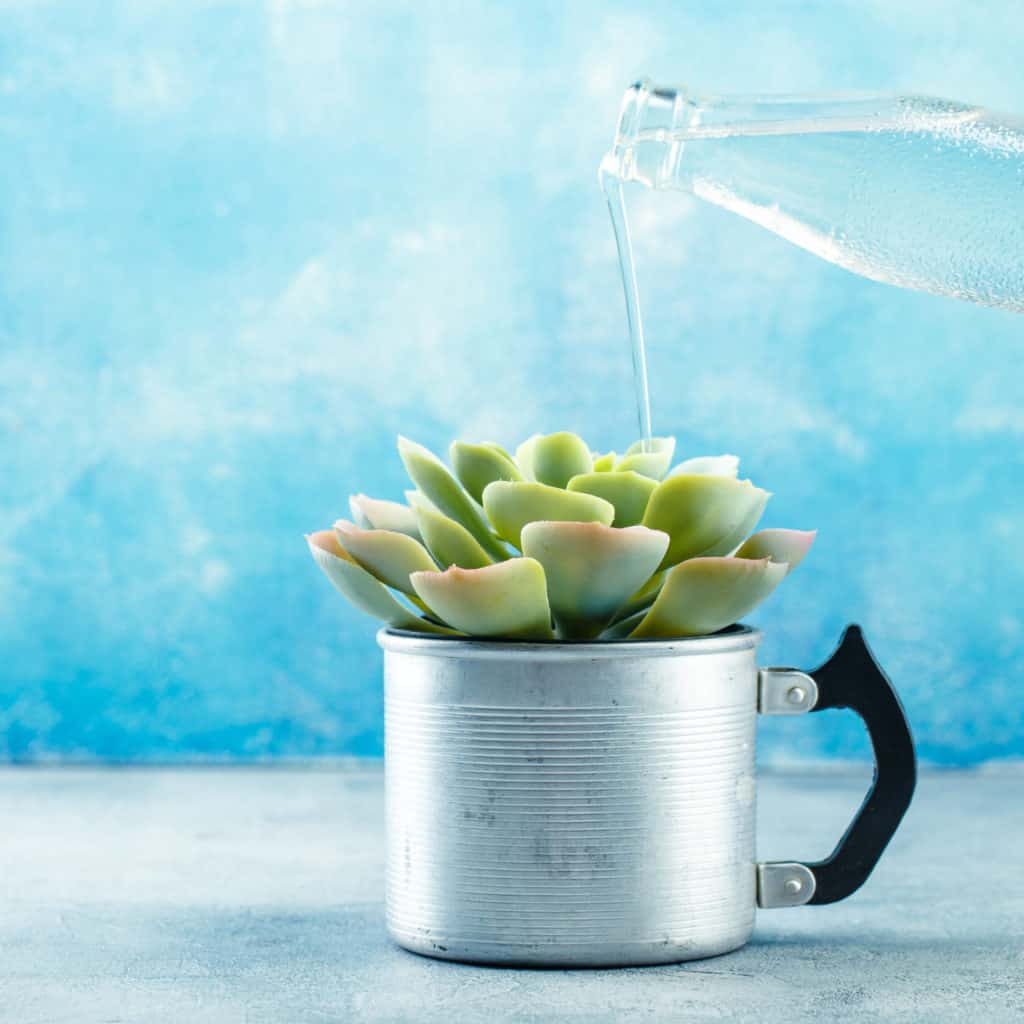
As a drought-tolerant plant, it’s better to practice infrequent but deep watering. This involves repeatedly soaking the soil thoroughly until excess water drains out before setting the plant aside for a week to dry out. This technique imitates the conditions in the wild, where it’s normal for succulents to experience a heavy downpour followed by prolonged dry periods.
However, if you start to see the leaves looking shriveled, it may need water pronto. Be sure to check the soil beforehand by using the chopstick method. It wouldn’t be enough to use the knuckle test method because the potting medium needs to be dried out completely, not just the top 1-2 inches. You can also use a soil probe but be sure to get a good quality one as most tend to be kind of wonky and unreliable. This particular moisture meter from Amazon is pretty reliable; just be sure to actually stick it in the soil and not in plain water.
3. Plant in a Mixture of 5:3:2 of Potting Soil, Coarse Sand, and Perlite/Vermiculite Respectively
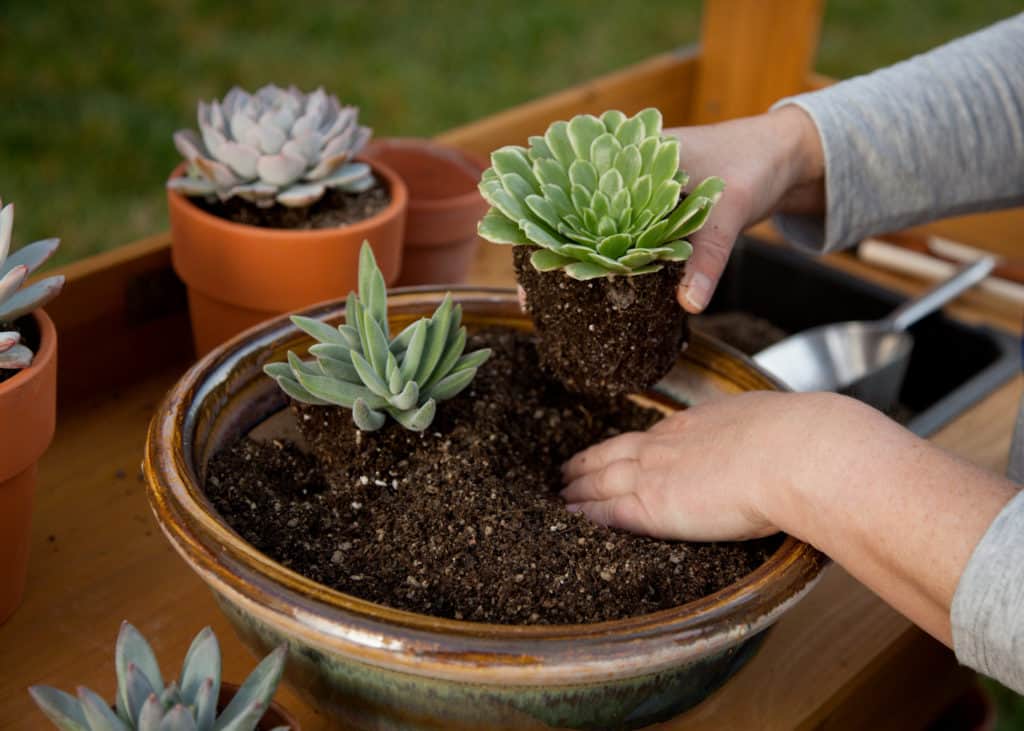
This particular soil combination effectively safeguards your Echeveria from getting too much water. The coarse sand (be cautious of using river sand, horticultural sand is the safest bet) and perlite/vermiculite act as aerating materials to allow quick drainage and adequate airflow around the plant’s roots. The potting soil is primarily there to retain just enough moisture for the succulent to absorb its nutrients.
You can also use readily available cactus and succulent mix instead. It has the added benefit of having slow-release fertilizers included to boost your succulent’s growth. So don’t worry if you don’t really want to make your own soil mixture; a ready-made one is more than enough for your Echeveria to grow in. You can try using this soil mix from Amazon if you’re not sure where to find it locally.
4. Give Slow-releasing Fertilizers Twice a Year at the Beginning of Spring and Summer
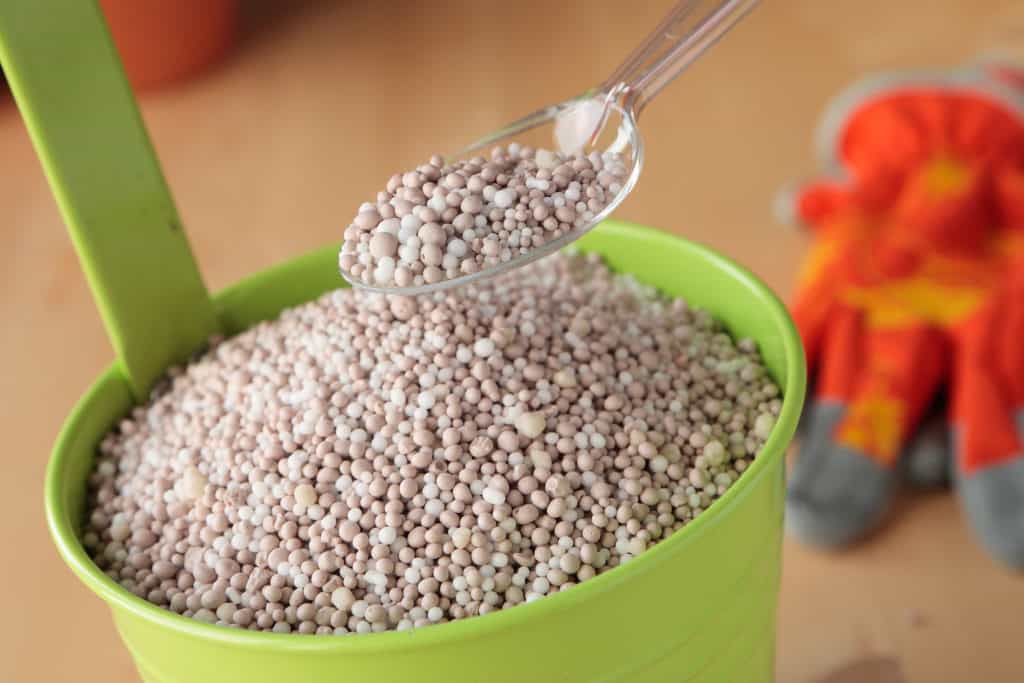
Indoor Echeverias are typically planted in sterile potting media lacking any nutrients. This is why most soil mixes have added fertilizers but enough to only sustain the plant for the first 3 months. Afterward, it’s advisable to give your plants fertilizers for continuous growth. I highly recommend using this succulent fertilizer from Amazon on your Echeveria.
For succulents, it’s always better to underfertilize them. They don’t need much because they can thrive even in a low-nutrient environment in the wild. If anything, the chances of Echeveria experiencing fertilizer burn are high. It’s better to err on the side of caution and use it as infrequently as possible and less than the recommended dose.
5. Place in a Warm Area Away from Radiators, Air Vents, and Open Windows
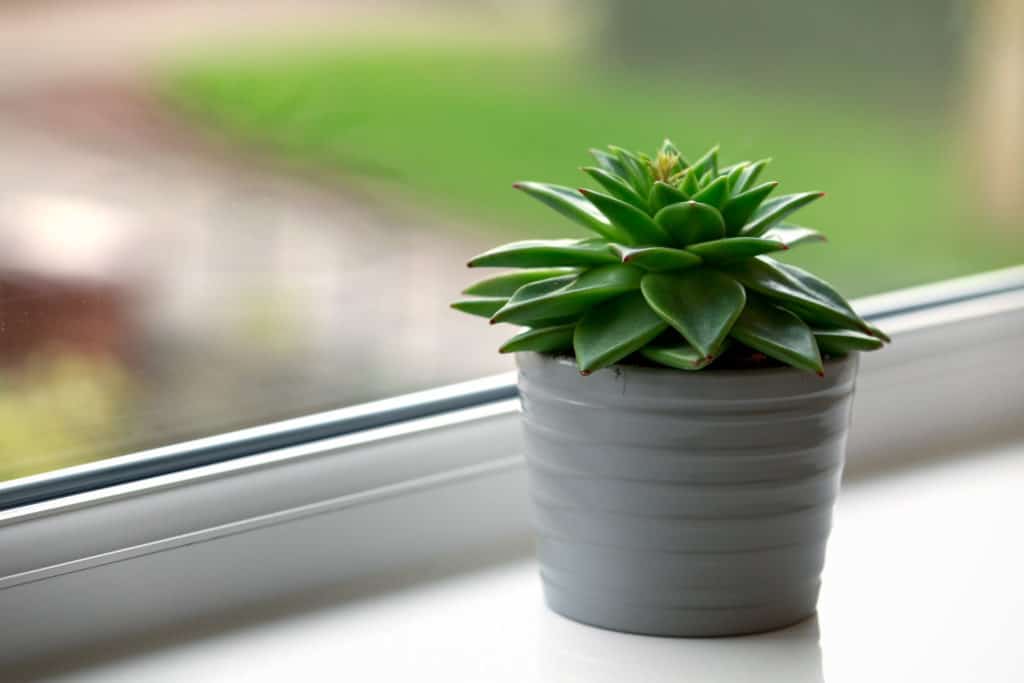
Usually, this is a problem when you’re constantly moving your succulent from one area to another. But it can also come from being placed in a room with fluctuating temperatures. ‘Cause one moment you’re hot then you’re cold, you’re yes then you’re no; it’s enough to drive a person crazy, let alone a plant. Place it in a relatively warm and dry area away from drafts.
Humidity-wise, it’s not an issue because typical homes have 30% humidity levels or lower, which suits Echeveria just fine. So it’s alright to let it keep vibing and sipping on some imaginary pina colada without the need for a humidifier to keep it thriving.
6. Repot Echeverias Once Every 2-3 years
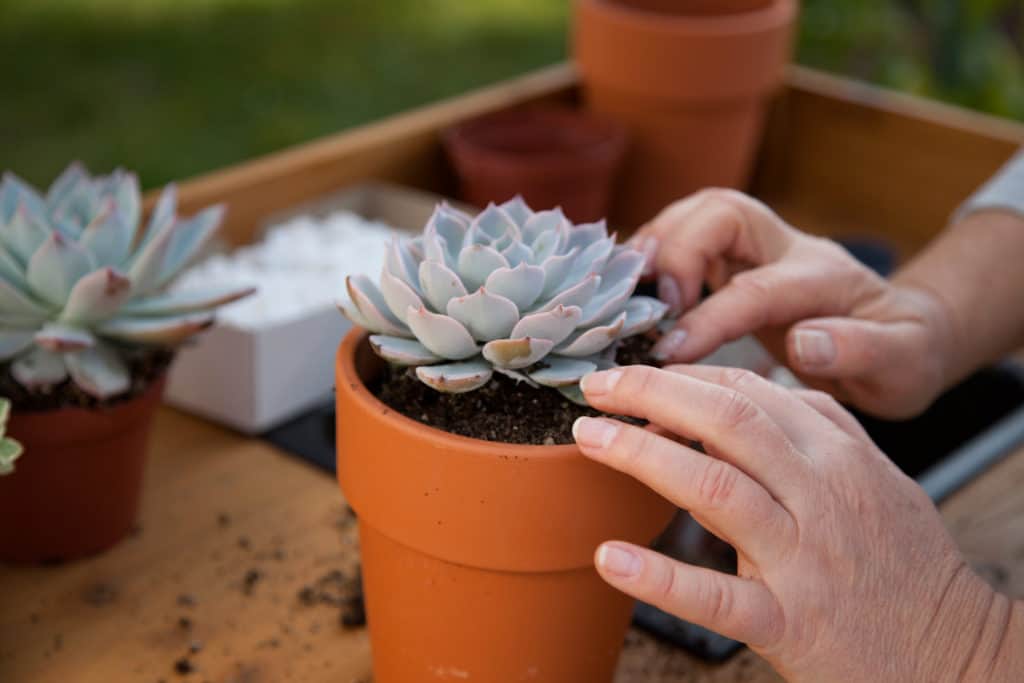
Echeverias grow relatively slowly, so repotting them annually is not necessary. After some time, they will need more space to accommodate their new growth. Opt for a pot size about an inch wider and an inch deeper than the Echeveria’s rootball.
Remember, you shouldn’t go for too large of pots because it will create a dead soil zone where water will accumulate. This will make the perfect breeding ground for pathogens to party and eventually kill your succulent off from root rot.
7. Pull Away Healthy Leaves or Offsets to Propagate More Echeverias
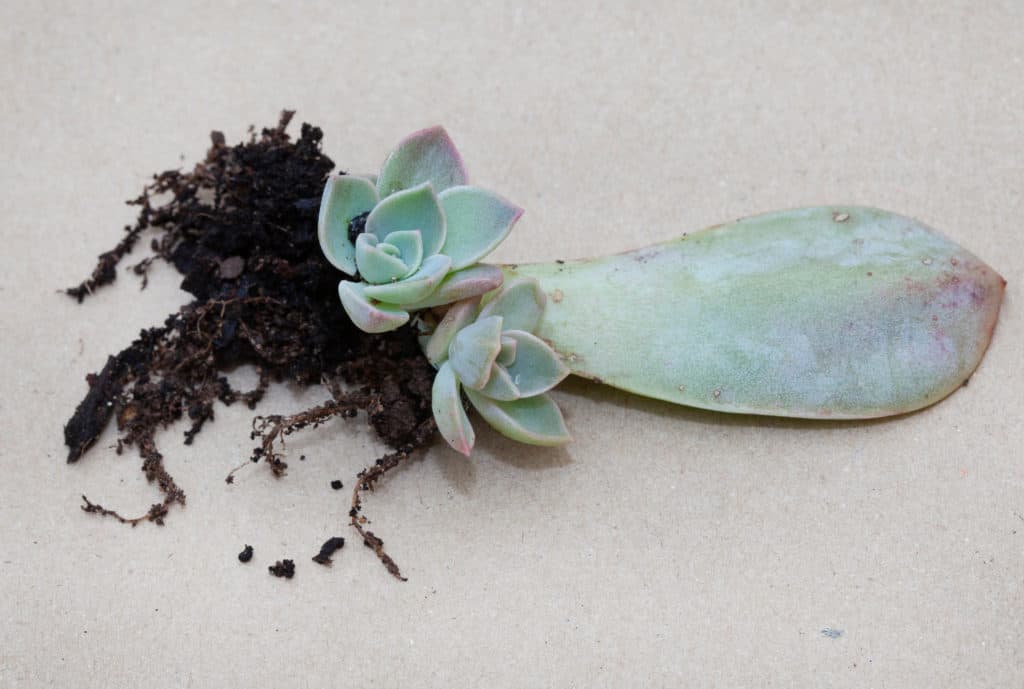
Echeverias always grow offsets, i.e., mini versions of the parent plant that will pop from the base and grow larger as you leave it there. Eventually, you can pull these off and plant them in their own pot. But you can also leave them as is on the mother plant.
You can also propagate Echeverias by taking a healthy leaf-cutting. It’s as simple as gently pulling them off and placing the cut end on the soil. Eventually, a new tiny plant will take root and grow. You can find out more on how to do this type of propagation in this article.
8. Do a Biweekly Pest and Disease Check to Maintain Echeveria’s Health
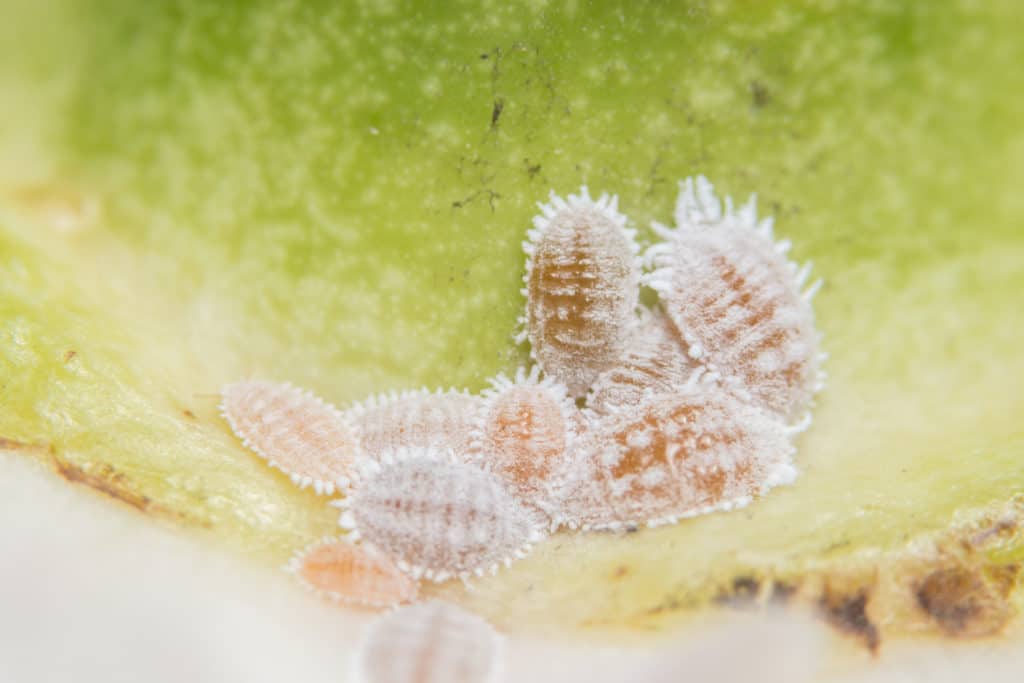
Echeverias, like most succulents, are often pest and disease-free. However, that doesn’t mean the plant is immune from such problems. Improper care and infested & infected plants are often the main reasons they suffer such conditions.
For example, a common pest you might see on Echeverias is mealybugs. These need to be dealt with immediately as they are spotted. Otherwise, the pest will keep feeding on the succulent’s sap juices, causing it to shrivel up. You can find out how to get rid of them in this helpful article.
As for diseases, they are prone to root rot caused by overwatering. This situation is where the roots are suffocating due to a lack of oxygen. The rot will travel upwards to the stem and leaves, by which point, it would already be too late to save the plant. You can find more helpful information on root rot in general in this article.
Eventually, if either problem isn’t addressed immediately, your plant may be too far gone from saving. The best you can do then is salvage any healthy leaves to propagate your Echeveria.
9. Do Not Prune Echeverias Unless it has Extensive Damages on the Leaves and Stem

Echeverias very rarely need any pruning. At best, it’s just pulling off any dead, dried-up, and damaged leaves off the plant. Especially if the leaves have been a victim of sunburn or any physical marring. The latter tend to stay around for a long time and become a scab due to the plant’s slow growth. You can opt to pull them off, but it’ll result in an imbalance in their leaf symmetry, so essentially, it’s entirely up to your preference.
Suppose the Echeverias are going through a particularly rough patch and are dying. In that case, it may be best to behead the mother plant and take some healthy leaves or offsets to propagate. Otherwise, you’re not going to be doing a lot of pruning with your succulent.
And that’s really all there is to it. Echeverias are a perfect low-maintenance plant to start with. When in doubt: keep it bright, keep it dry, and it’ll stay alive. Happy planting!
References:
http://pss.uvm.edu/pss123/sucech.html
https://www.britannica.com/plant/Echeveria
https://worldofsucculents.com/genera/echeveria/
http://chemung.cce.cornell.edu/resources/care-of-non-hardy-cacti-and-succulents
https://www.canr.msu.edu/news/secrets_to_success_when_propagating_succulent_plants

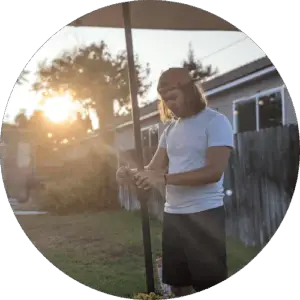
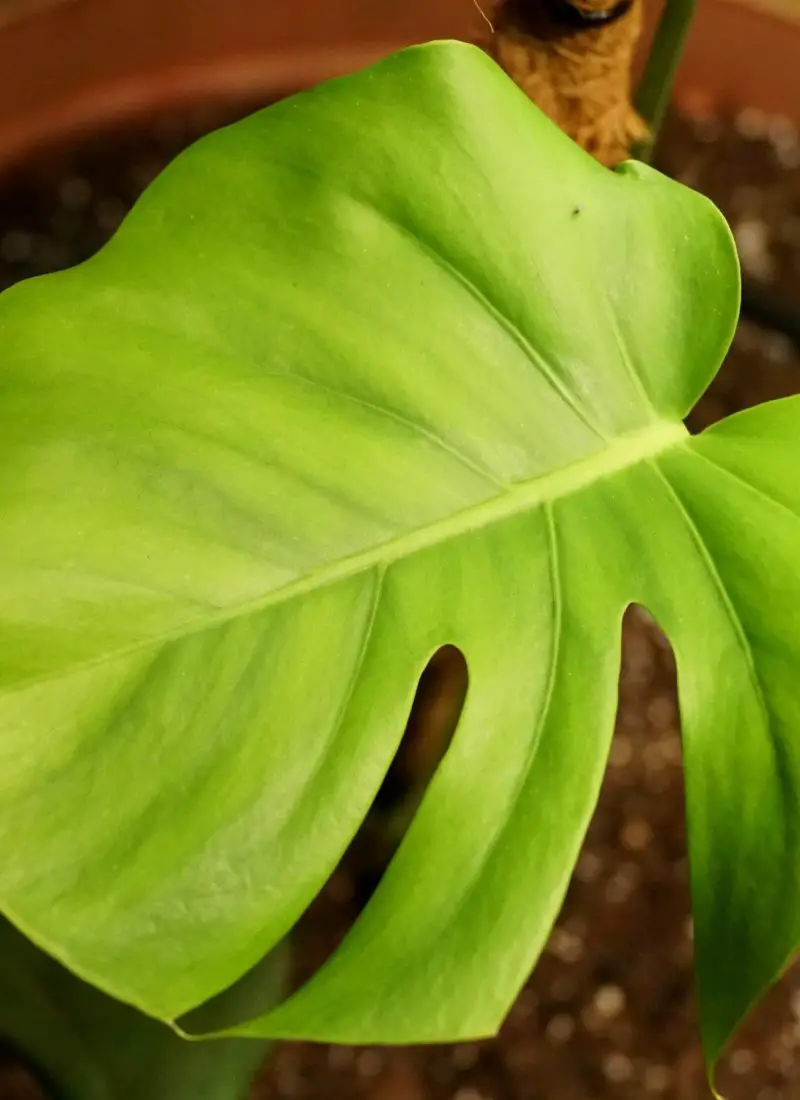
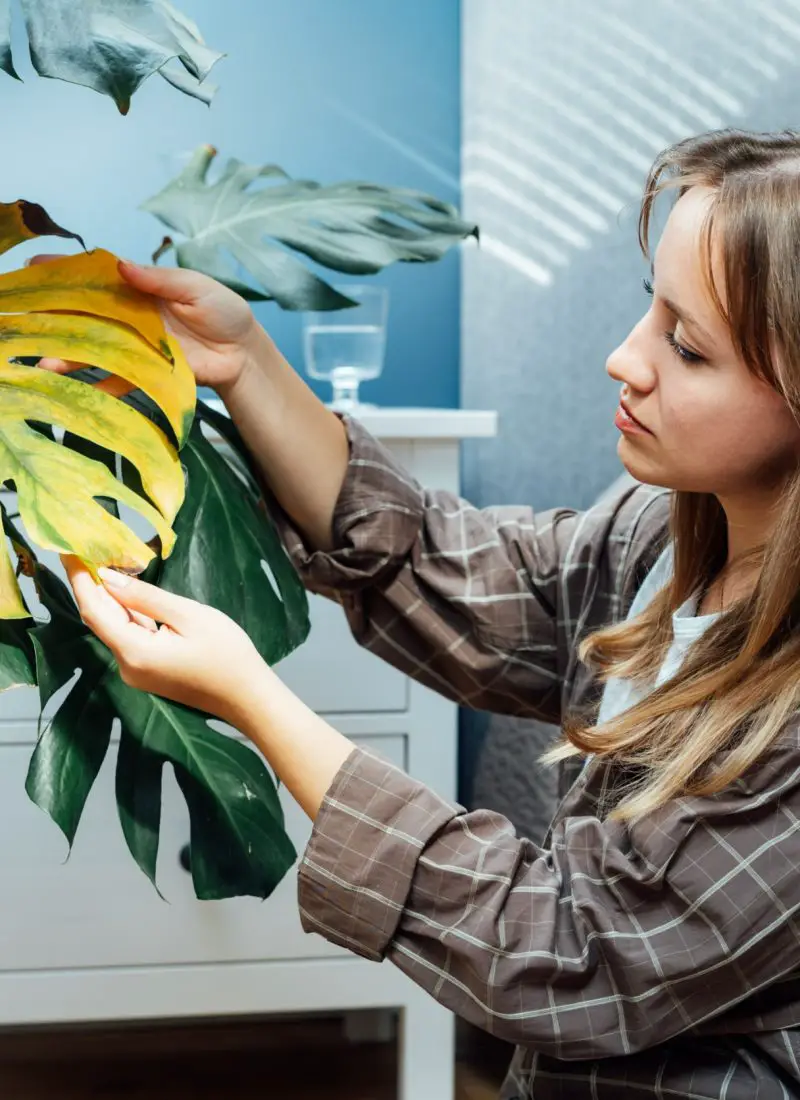
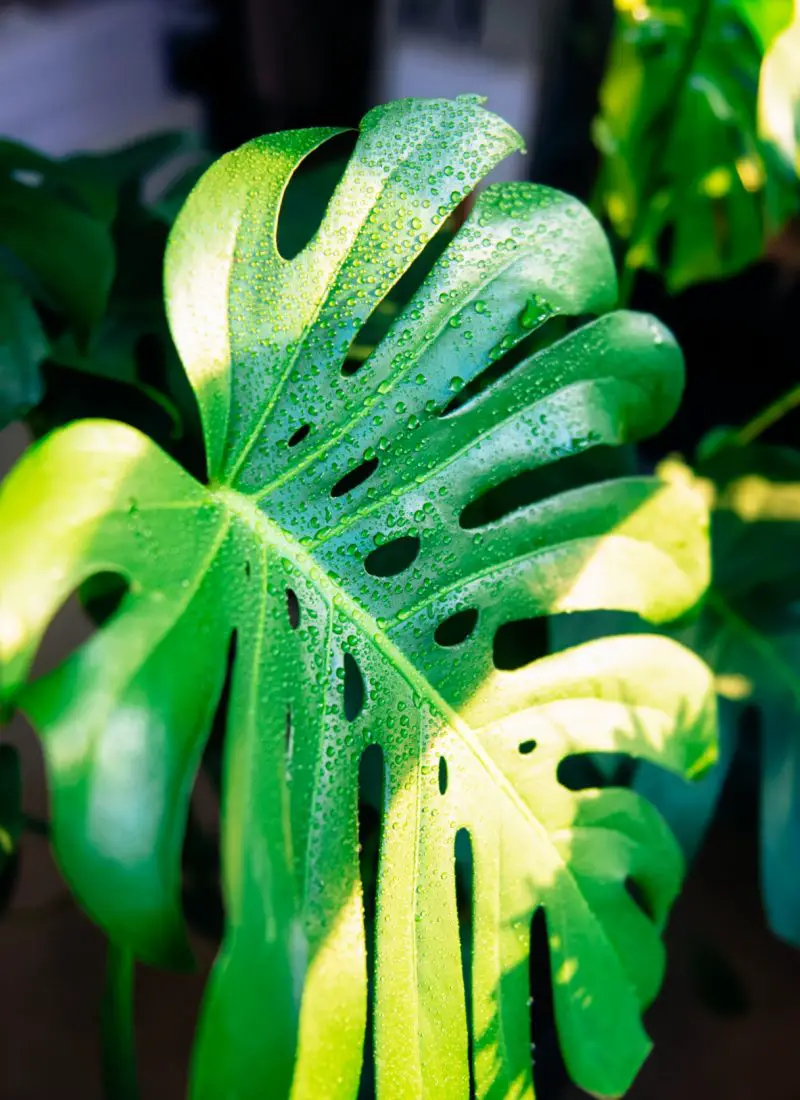
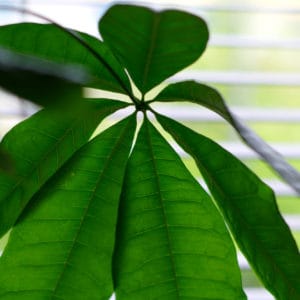
Leave a Reply